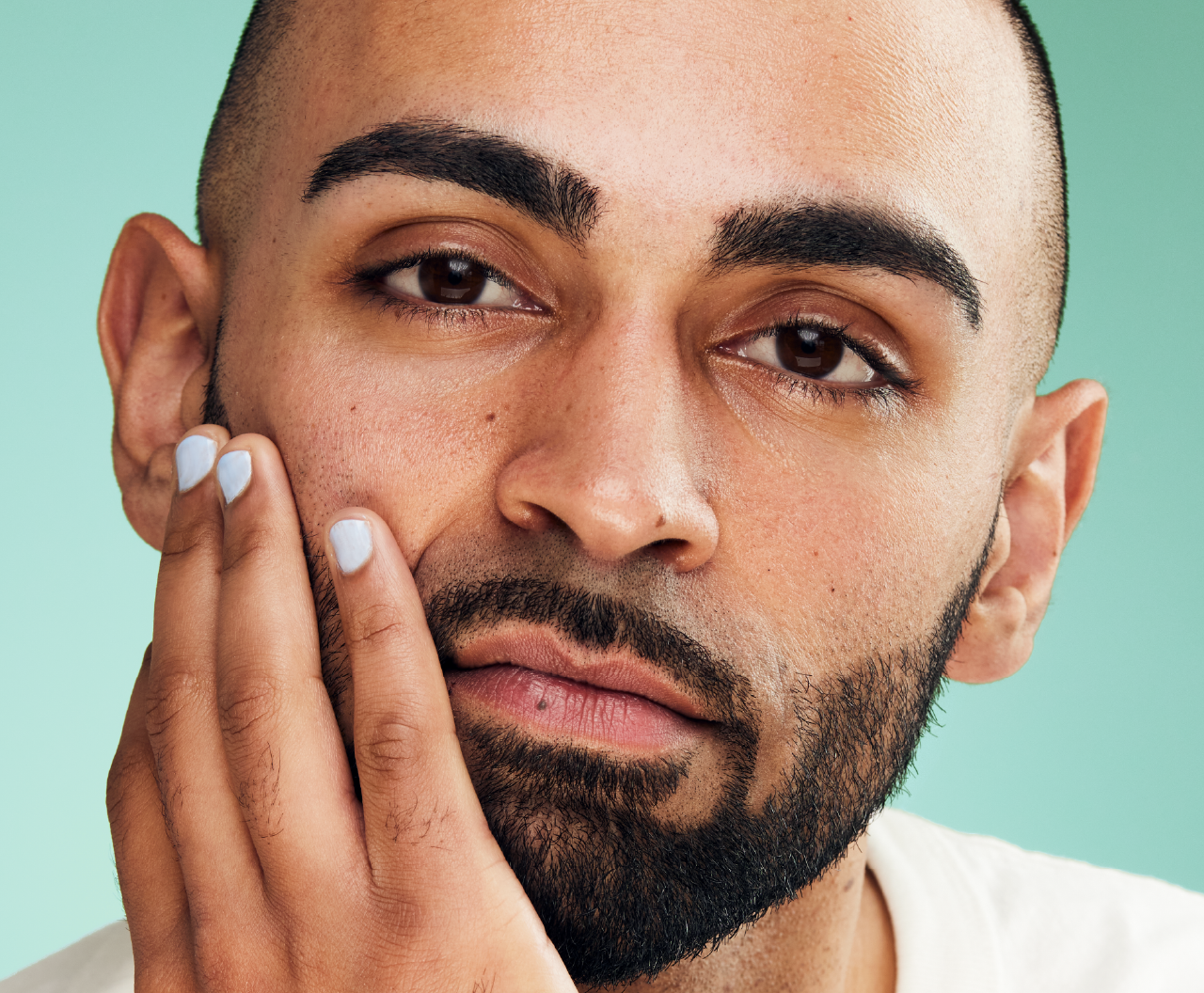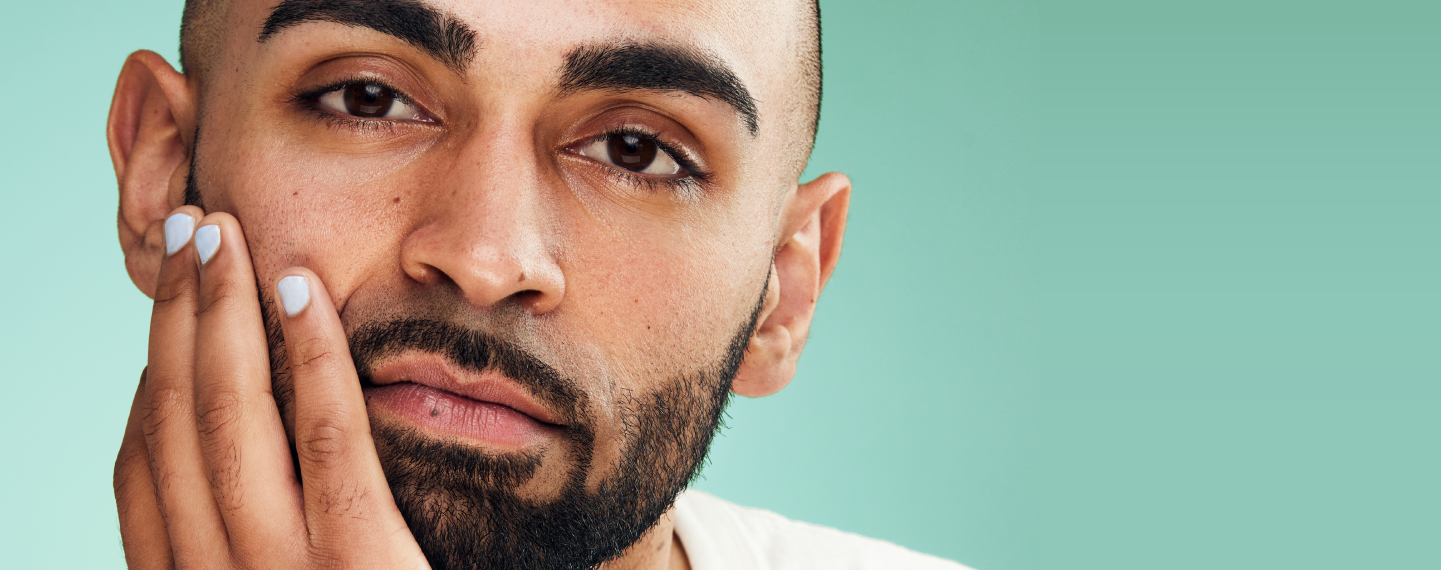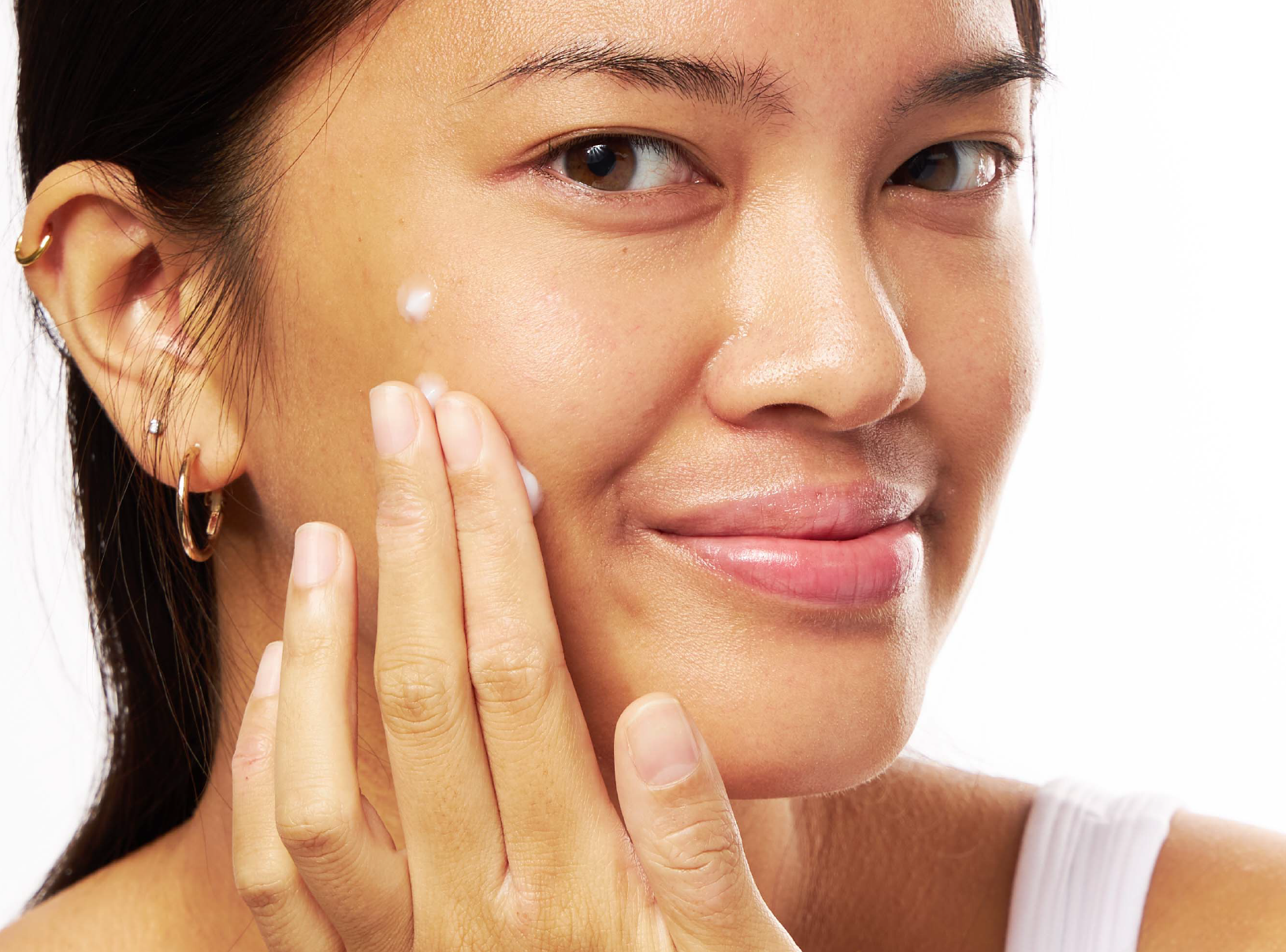Education
How to get rid of pores


SHARE
Education
How to get rid of pores
Medically reviewed by Angela Sheddan, DNP, FNP-BC
Written by Apostrophe Team
Last updated 4/1/2024
Many of us have a love-hate relationship with our pores.
Pores are an important part of the skin’s makeup and functionality and play a crucial role in our body. They’re responsible for cooling us down, keeping us from drying out, and ensuring we don’t go bald.
But pores are often seen as nuisances on our skin.
If you have large, visible pores, we understand your frustration. These large spots on your skin can be annoying and make you feel self-conscious. And if you take good care of your skin, it can make you feel frustrated that they don’t seem to go away.
The good news if you’re struggling with your pores is that there are treatments available to make them less visible. But before we get to that, we should explain why pores exist, and what they do.
What Are Pores
What we commonly know as our skin’s pores aren’t actually pores at all. Pores function differently than the structures we think they are. In the skincare world, it’s the common terminology for two types of “depressions” on the skin: those that contain sebaceous glands and hair follicles, and those that contain sweat glands.
In other words, the pores you see (and the ones you don’t, for that matter) are either hair follicle holes or sweat-producing holes, but in either case, they’re there to allow certain things to exit your skin.
As you might suspect, these things can get clogged—and they often do, causing a variety of acne and other issues, as well as infections if left untreated.
Pores are typically microscopic, and for many people, they can’t be seen by the naked eye. But that’s not true for everyone, and it’s particularly untrue when those pores are clogged.
Pores are also not the same from person to person: you and your best friend may have drastically different pore densities and sizes, which may be based on a variety of factors including genetics.
What Is An Enlarged Pore
Simply put, enlarged pores are pores that are bigger than normal. Maybe that’s not helpful, but it turns out that even the medical community hasn’t gone much farther than that definition.
That’s because enlarged pores are mostly a cosmetic issue, and because of that, the definition of an enlarged pore can be arbitrary. The common agreement is that a pore is enlarged when it can be “visualized by the naked eye,” and they most commonly occur on the face or scalp (though they likewise occur in places where acne is common, including the chest and back).
So if you’re seeing them, you have them. How to stop seeing them, though, is a bigger and more complicated issue. To help with that, let’s address what may cause your pores to be enlarged.
Why You Have Enlarged Pores
If you’re in possession of visibly large pores, there are many reasons why this could be the case.
There are plenty of potential links between external factors and your likelihood of having enlarged pores, but it’s important to understand that everyone’s skin is different and their reasons for having enlarged pores will vary.
Enlarged pores are commonly believed to be due to a variety of concerns, including loss of skin elasticity and tension, larger hair follicle sizes, or seborrhea (commonly known as dandruff).
That said, the medical knowledge isn’t 100 percent certain, and other factors might deserve a place on the list, including acne, photodamage, genetic predisposition, and even things like vitamin A deficiency.
But, to be clear, checking any one of these things off the list does not mean it is the cause of your large pores. Just because you have or have had acne doesn’t mean your enlarged pores are caused by it, and there’s no correlation between the severity of acne and the presence of enlarged pores.
How to Treat Enlarged Pores
As you might have guessed from what we’ve told you, you can’t actually “get rid” of your pores—and you shouldn’t necessarily want to. Instead, you may be interested in cosmetic procedures and routines that may help to diminish the appearance of the pores and make them less noticeable.
According to the American Academy of Dermatology Association, there are several ways to reduce the appearance of enlarged pores.
Obvious ones like washing your face twice a day may already be part of your routine, as might using oil-free makeup and skin care products (look for the word non-comedogenic). But here are five that you should consider seriously:
Treat Acne
This may feel like an obvious answer, but treating your acne will unclog your pores, which may make them appear less noticeable overall. According to the AAD, you should use a product with salicylic acid, which unclogs pores effectively.
Use Sunscreen
A tan might not directly impact the appearance of your pores, but long-term sun damage will. That’s because sun damage reduces the elasticity of your skin. The AAD recommends “applying a broad-spectrum, water resistant sunscreen with an SPF 30 or higher” every day, even when it’s raining outside. If you’re looking for a sensitive derm-approved sunscreen with SPF 43, check out ‘Screen.
Exfoliate
Exfoliating is a key concept in pretty much every area of skin care, but it can also help with your pore visibility. That’s because exfoliating removes the dead cells and other debris from your skin that may ultimately end up clogging those pores in the first place.
As a bonus, exfoliating also will give your skin a youthful appearance, since it’s bringing younger skin cells to the surface. While it may be tempting to reach for a face scrub, instead consider using a chemical exfoliant or a retinoid like tretinoin.
Retinoids have the added benefit of offering vitamin A benefits to your skin, including the stimulation of cellular growth. And despite some mild concerns about irritation, tretinoin is considered safe and effective—it’s been dermatologist-prescribed since the ‘60s and has been shown to improve collagen synthesis.
If you want to learn more about the different types of retinoids available, check out our blog on the difference between retinol and retinoids.
Be Gentle
Maybe this is a weird thing to say immediately after telling you to exfoliate, but there’s a limit to scrubbing, and irritation is where that limit comes along. According to the AAD, irritation can make your pores look larger.
They also recommend you don’t pick, squeeze, or dig at pores, even if you see stuff in there that you instinctively want to squeeze out (sorry, pimple poppers).
Treat Sagging Skin
Aging got you down? Well, it may be having the same effects on your pores. According to the AAD, when skin sags, pores look larger.
They recommend seeing a dermatologist, who can assess your skin and help make recommendations for what procedures or products might help you target those signs of aging. That, in turn, may help reduce the appearance of pores, fine lines, and other skin concerns.
Your Pores and Your Confidence
Whether medicine defines enlarged pores as a cosmetic condition or not, the fact is that if your skin’s appearance is giving you self-confidence concerns or making you self-conscious, it’s more than a “cosmetic” issue.
Part of the problem might be resolved just by talking to someone about these issues and learning to accept that no one’s appearance is perfect—not before Photoshop and filters get involved, anyway.
But if these issues are impacting your interactions with other people or your confidence in personal and professional settings, it may be time to reach out to a healthcare professional and seek some additional help.
Chances are, if you’re reading this, you’ve already tried a fair number of over-the-counter products looking for the right products for your pores. The reality might be a more permanent (daily) routine, or stronger skincare products than what you can buy over the counter.
The good news is that there are a lot of tools that you and a healthcare professional can employ to reduce the visible appearance of your pores. So stop poking and popping, and go get yourself some backup.
4 Sources
What can treat large facial pores? (n.d.). Retrieved March 19, 2021, from https://www.aad.org/public/everyday-care/skin-care-secrets/face/treat-large-pores.
Dong, J., Lanoue, J., & Goldenberg, G. (2016). Enlarged facial pores: an update on treatments. Cutis, 98(1), 33–36. Retrieved from: https://cdn.mdedge.com/files/s3fs-public/issues/articles/CT098007033.PDF.
Flament, F., Francois, G., Qiu, H., Ye, C., Hanaya, T., Batisse, D., Cointereau-Chardon, S., Seixas, M. D., Dal Belo, S. E., & Bazin, R. (2015). Facial skin pores: a multiethnic study. Clinical, cosmetic and investigational dermatology, 8, 85–93. https://www.ncbi.nlm.nih.gov/pmc/articles/PMC4337418/.
Rodan, K., Fields, K., Majewski, G., & Falla, T. (2016). Skincare Bootcamp: The Evolving Role of Skincare. Plastic and reconstructive surgery. Global open, 4(12 Suppl Anatomy and Safety in Cosmetic Medicine: Cosmetic Bootcamp), e1152. https://doi.org/10.1097/GOX.0000000000001152. Retrieved from https://www.ncbi.nlm.nih.gov/pmc/articles/PMC5172479/.
Like what you just read? Sign up for our email list to get the scoop on skincare science delivered straight to your inbox.

Deep Dives
A dermatologist shares his thoughts on the recent studies about benzoyl peroxide and benzene.
Read More
Education
What is milia?
What is milia? Today, we’re jumping into one type of bump that you may have heard about most commonly in infants — milia.
Read More
Education
Best moisturizer for acne-prone skin
If you have combination acne-prone skin, figuring out which moisturizer is best for your skin might be tough. In this guide, we break down the best moisturizer for combination, acne-prone skin.
Read More
